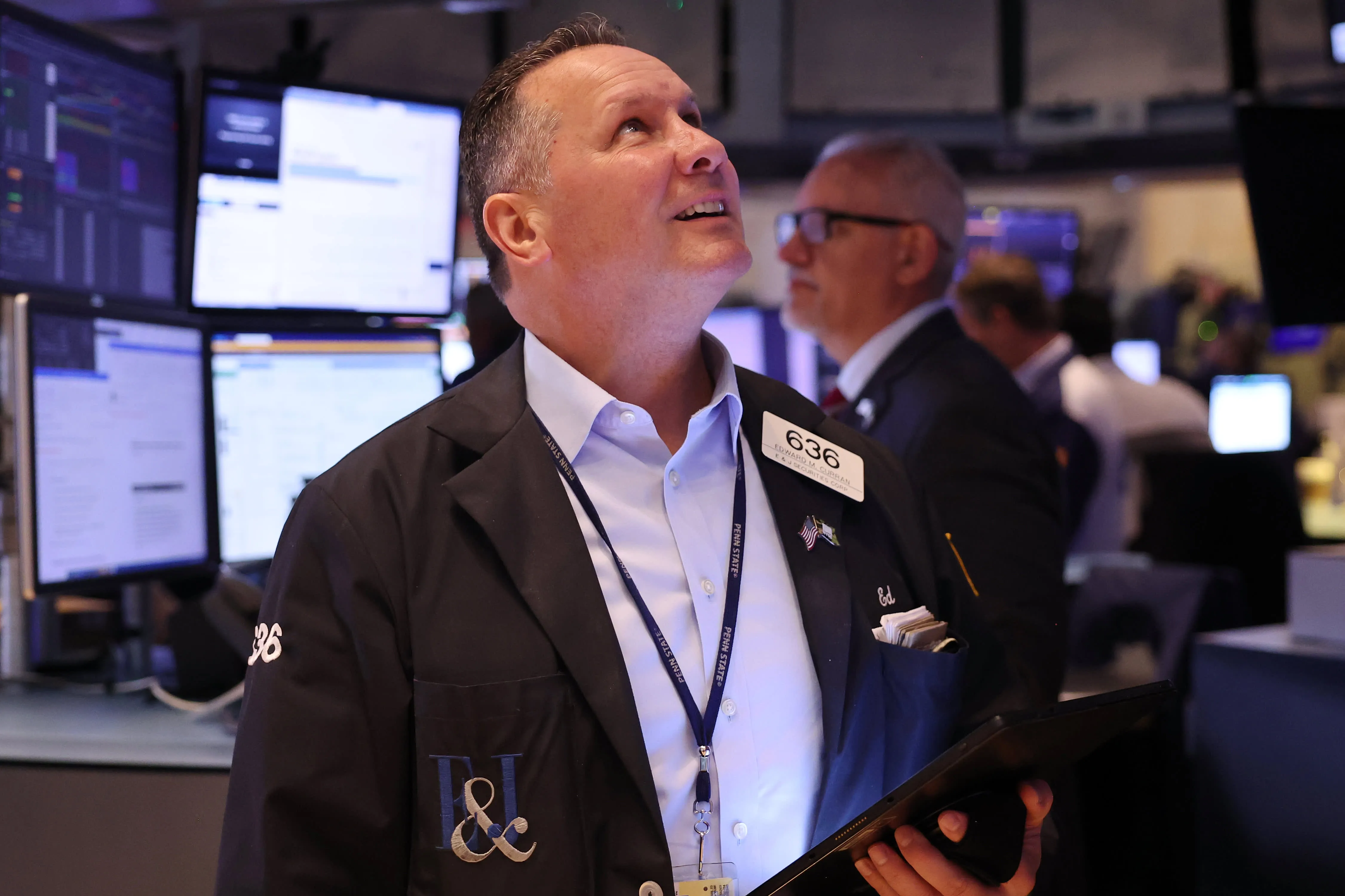The Stock Market Swoons as Traders Rush to Bonds Amid Trade Jitters
Flaring tensions between the U.S. and China rattled global markets on Friday, sending stocks, oil, and cryptocurrencies tumbling while prompting investors to seek refuge in Treasuries and gold.
President Donald Trump’s warning of a “massive increase” in tariffs on Chinese goods sparked a broad selloff, capping off an already turbulent week marked by concerns of a growing bubble in artificial intelligence stocks. The S&P 500 slid 2.7%, while the Nasdaq 100 dropped 3.5%. Meanwhile, crude oil plunged more than 4%, and the dollar eased after what had been its strongest week of the year.
Trump declared there was “no reason” to meet with Chinese President Xi Jinping, citing “hostile” export restrictions from Beijing. His social media post came after both nations took steps to tighten controls on key technologies and materials measures seen as strategic positioning ahead of their anticipated meeting in Asia later this month.
“That was definitely not what traders wanted to hear things went south fast,” said Steve Sosnick of Interactive Brokers in a note aptly titled “Tariff Rug Pull.” He added that the reaction revealed not only policy concerns but also the market’s growing complacency.
Sharp declines in risk assets have been rare recently, which may have amplified Friday’s jarring move. Since the tariff-driven selloff in April, the S&P 500 has rallied strongly on optimism surrounding AI and expectations of Federal Reserve rate cuts. But with valuations hovering near 25-year highs, investors had little room for bad news.
“Throughout the summer, greed has far outweighed fear in U.S. equities,” noted Michael O’Rourke at JonesTrading. “The current complacency leaves investors vulnerable. If the U.S.-China trade truce breaks down, this could easily develop into a broader correction.”
Over 420 stocks in the S&P 500 fell, marking the index’s worst day since April. The Cboe Volatility Index (VIX) climbed to 22, signaling a spike in market anxiety. Treasury yields also dropped sharply, with the 10-year yield falling eight basis points to 4.06%. Bitcoin sank around 4%, and key commodities like copper, wheat, soybeans, and cotton all traded lower.
Analysts at 22V Research, Michael Hirson and Houze Song, described the situation as “a very dangerous moment for global supply chains,” particularly those tied to AI technology. Still, they pointed out that neither side had yet implemented its threatened measures, suggesting “there is still time to de-escalate.” They warned that Trump could face significant political risks if he proceeds with sweeping tariffs.
Chris Zaccarelli of Northlight Asset Management emphasized how crucial stable trade relations with China are to investor sentiment. “Healthy U.S.-China trade ties help calm markets,” he said. “A full-blown trade war, on the other hand, would be extremely damaging.”
Michael Bailey of FBB Capital Partners suggested that investors might be using the renewed tariff threat as an excuse to trim positions in AI stocks, which have been soaring independently of broader market trends. “AI names have been sprinting ahead this year, largely untouched by macro concerns,” Bailey said. “That’s why today’s tariff-driven pullback feels a bit unexpected.”
From a technical standpoint, Dan Wantrobski at Janney Montgomery Scott said Friday’s drop wasn’t entirely unforeseen. “We were expecting brief air pockets like this,” he explained, citing overbought conditions, negative momentum divergences, and crowded positioning as key warning signs.
He also pointed out that the S&P 500 has never in its history fallen more than 20% twice within a single year on separate occasions. With many short-term charts now leaning toward “moderately oversold” territory, he sees potential for short-term rebounds. “We expect a corrective phase of roughly 5% to 10% from the recent highs,” Wantrobski said, “but our models don’t indicate a major structural downturn for 2025.”
The escalation in trade rhetoric comes just as investors were starting to call for a pause in the stock market’s relentless rally. The S&P 500 has nearly doubled in value over the past three years, drawing massive inflows across asset classes.
According to Bank of America, global equity funds saw $20 billion in inflows during the week ending Oct. 8, while bond funds attracted $25.6 billion. Even cryptocurrencies gained traction with $5.5 billion in new investments, and cash funds swelled by nearly $73 billion suggesting that investors still hold substantial liquidity.
As traders rushed to safe havens, Treasury prices climbed across maturities. “Investors are moving defensively as steeper tariffs could hit corporate profits and slow the economy,” said Jose Torres of Interactive Brokers. “The sharp flattening of the yield curve, combined with gains in gold and silver, reflects growing concerns about a slowdown.”
Andrew Brenner at NatAlliance Securities said the market reaction echoed the turmoil seen back in April, when similar tariff threats caused a steep equity selloff and sparked a surge in Treasury demand. “The bigger story is the reversal in stocks it feels like a Liberation Day 2.0,” he remarked.
The dollar weakened against most major currencies Friday but still managed to post a roughly 1% gain for the week, capping off another volatile chapter in the ongoing U.S.-China trade saga.
In summary, the market’s sharp reaction underscores how sensitive investors remain to geopolitical risks especially those that could disrupt trade and technology flows. With valuations stretched and sentiment leaning toward optimism, even a single policy tweet can be enough to send shockwaves through global markets.

Subscribe to our newsletter!
As a leading independent research provider, TradeAlgo keeps you connected from anywhere.








